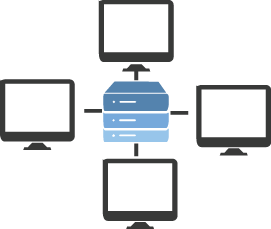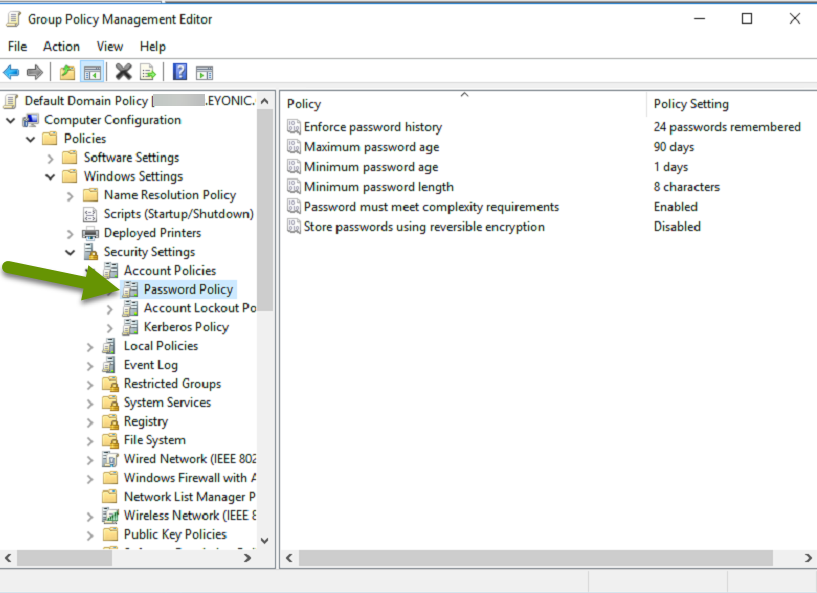4 Ways to Detect if Your Business Benefits From a Server
Most businesses start small and grow with time. Starting small means fewer employees, fewer devices and less of an infrastructure when compared to larger businesses. Over time, the needs of most businesses change. This can be due to growth, changes in products and services or even in available technologies. Additions to a business often leads to the need for more infrastructure.
As devices are added to a business, there is a tipping point where individual devices would be better served by implementing centralized management. Servers are a great way to provide centralized management. Two categories where they are most effective are file and user management. This post discusses aspects of business management and when the business could benefit from adding a server.
4 Ways to Detect if Your Business Benefits From a Server
There are 2 main categories of your business to consider when deciding whether or not a server makes sense for your business. They are:
- File Management
- User Management

File Management
Problem: Do you or your employees waste time trying to locate files or regularly find different people working with various file versions?
When multiple devices are used, especially when they are added over time, business files end up scattered across many devices. This makes files more difficult to locate when needed, often leads to inconsistent versions, and makes those files less likely to be protected by backups.
A server can consolidate files created by, and used by, your business and its employees. Consolidating files into a single location also helps manage those files. There are many benefits to managing files in a central location including:
- Ensuring employees are using the same versions of files and templates for business consistency
- Empowering employees by making sure they have access to important company files
- Reducing duplicated work because everyone has access to already created files
- Increasing business continuity by making it easier to back up important company files
- Protecting sensitive files by managing file access to a single location
Solution: It might be time to invest in a server if your business files are scattered across 8 or more devices. The reason for this is that it is unlikely that a single device can hold everything. Even if it did, having that many users access files shared from a single device slows the shared device. This means time is being wasted because a device is running slow, or because multiple shares make it harder to find what you need.
User Management
There are 3 things to consider within user management:
- User accounts
- User permissions
- User controls
User accounts
Problem: Do users regularly move between devices, use multiple devices, or do employees frequently change throughout the year?
With single devices in a workgroup, user accounts have to be manually created on each computer before a user can log on. If users move around or use multiple devices, a user account must be created on each computer. It is critical each user account is created with the same password on each computer they use. Otherwise you end up with inconsistent password combinations. This leads to one of the biggest user struggles with workgroup based devices.
When a server is in place, user accounts are created and managed there. This provides multiple protections and simplifies user accounts. A server allows the singular creation of user accounts that can then be immediately used on any computer in the same network. Disabling user accounts and password resets are also done on the server. Again, these changes are immediate and active for all devices.
Solution: If you are regularly spending time creating user accounts on multiple devices, updating user passwords, adding or removing local user accounts, or struggling with mismatched credentials, it is probably time to implement a server.
User Permissions
Problem: Do you have company files that should only be shared with certain users?
When files are spread across multiple devices, it is extremely challenging to track who has access to what files. Smaller offices are often set up with simple file structures and permissions in the beginning because that is all that is warranted. Over time though, businesses are more likely to have files that should remain confidential. Managing these files on multiple devices is inefficient and often forgotten.
This is where the benefits of a server can be optimized. Using groups, you can add a group to a share so only members of the group have access to those files. If you need to modify permissions, you only need to go to a single place to change them on the server. Managing members of the group is quick and efficient since they all fall within the same application.
Solution: A server will allow you to easily create shared folders that all users can access, or only specific users can access. The best way to implement this is by creating groups of users and giving access to the confidential folders or files to the appropriate group(s).
User Controls
Problem: Are updates being installed regularly? Are local user accounts all the same type? Are firewalls enabled? Are users creating complex passwords?
With nothing but individual devices it is extremely difficult to keep them relatively the same. Making sure they run updates, power off after a certain period of inactivity, have the software firewall enabled, that users have the appropriate account type, etc., is nearly impossible for a single person to manage. Instead, users end up with an inconsistent experience across devices.
Many of these things can be managed using Group Policy on a server. Simply set the desired parameters and they will be applied to everyone in the Group. Here again, separate group policies can be created and different users added to them. This means different settings can be applied to different users. Either way, when you need to change something, simply update the Group Policy and the change is pushed out automatically from the server.

NOTE: Group Policy is broken into computer and user configurations and there are hundreds of options within each category. Keep in mind, it is a good idea to create a back up of the existing group policy before making any changes in case you experience an unintended result. To make a backup, simply select the group policy, then click on the Action menu and select "Back Up...".
Solution: If you are bogged down trying to ensure a consistent user experience, a server may be the answer. Group Policy has hundreds of options that can be set and once they are, they apply to all devices and users on the network within that policy.
Starting a business with nothing but a few computers is often the most appropriate in the beginning. Over time though, many businesses outgrow this setup and need a more resilient infrastructure. Servers provide better and more consistent file management, consolidated user account management, user permissions and user controls in ways that a workgroup cannot meet.
As always, knowing when it is cheaper to implement a server versus the time spent managing individual devices over the long term is key.

